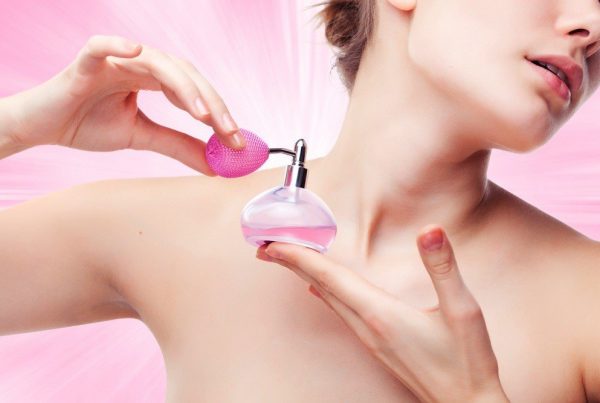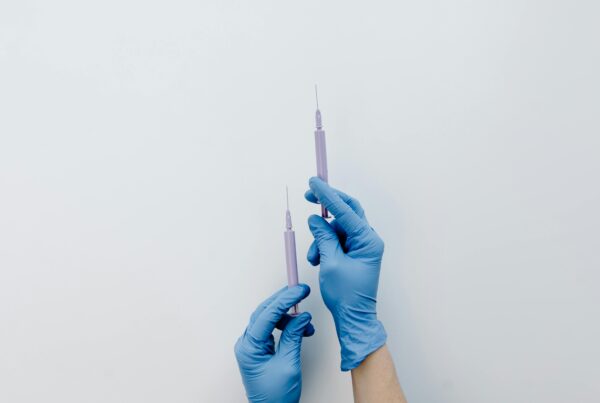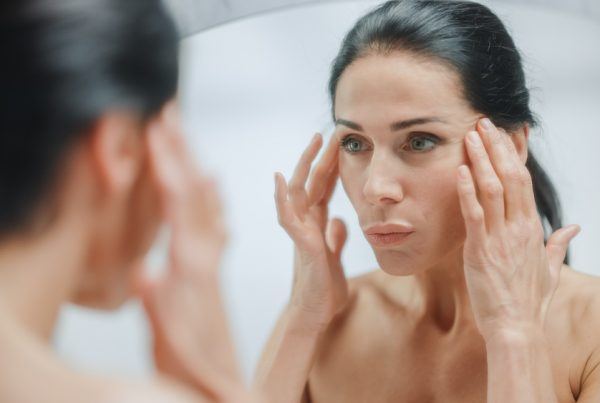Micro-blading vs Micro-shading; which will solve those 90s brows? A quick look at some old photos, when compared with looking in the mirror in 2023 will tell you all you need to hear about the evolution of eyebrows. Just 10 or 15 years ago, we were all plucking our brows into obscurity.
Yes, the brows of the 90s were quite something to behold. Luckily for all of us, we have moved on from the heavily tweezed, severe brows of that era. However, as a result of all of that over-plucking, many of us have struggled to regrow this precious hair. This has left us with a distinct eyebrow deficit. Now, all we want is fuller, thicker, and more natural-looking brows. This has many of us looking for new, more permanent options. But which is best? Micro blading or micro shading?
What is micro-blading?
So what is micro-blading anyway? Well, it’s a permanent makeup technique where small strokes that mirror the look of tiny hairs are tattooed onto the skin. The aesthetician uses these tiny hairs to reshape and fill in the brows where necessary. In most cases, the tool used is a small handheld electric device. This tiny needle gives maximum control and allows the specialist to make tiny incisions into the skin for the ink.
Generally, micro-blading is a well-established and popular option for many people. Whether you have lost hair due to something like chemotherapy or simply want fuller, thicker-looking brows, it’s a good treatment to opt for.
What are the benefits?
You’ll have thicker and fuller-looking brows that will make getting ready a breeze. When micro blading is done correctly, it looks very natural and maintenance is relatively low. The fine strokes make for a natural, hair-like look which means you likely won’t have to fill in your brows.
There are a few different options
There are differing approaches to micro blading and each technique will give a slightly different result. One of the many options is ‘micro-feathering’. This, according to legendary brow expert Joey Healy, is really just micro blading with a lighter touch.
There are other methods but overall, it seems that micro blading works best when it is used in conjunction with a brow powder or gel as it makes it look more natural.
Are there any downsides?
A major downside of micro blading is, of course, the cost per treatment. If you want a really good result, you’re going to have to pay for it. The other issue is that it doesn’t last that long. Generally, it will last for between 8 and 10 months before requiring a touch-up. However, how long it lasts is also down to your skin type and how well you look after your brows post-treatment. On oilier skin, pigments are likely to fade much faster.
The other slight downside is that most often, micro-blading is done over two sessions. One is the main treatment and the second, is a touch-up.
This touch-up will allow the aesthetician to review healing and go over any areas that might have faded. This gives the hair-like strokes more definition and also makes for a longer-lasting treatment.
Can you fix micro-blading that’s gone wrong?
The quick answer is yes, you can fix it. However, having said that, it can’t be done overnight. In most cases, the skin has to heal before any other treatments can be done. The only way to permanently and immediately ‘fix’ bad micro blading is to opt for laser. You’d need to use the same laser (Picosecond laser) that is used on tattoos.
Unfortunately, this is very pricey and must be done by a trained professional. If the issue isn’t too severe, you can use makeup to cover up any oddities and even out your brows. Of course, this sort of undermines the reason many people opt for the treatment which is to avoid doing their brows.
What is micro-shading?
Micro-shading is essentially a less intense version of micro-blading. It’s also commonly referred to as ombre or powder brows. Instead of the small, hairlike strokes used in micro-blading, the aesthetician will use dots. The closer the dots are to each other, the deeper and more prominent the color will appear. Because of the lack of lines, micro-shading gives the appearance of brows that have been powdered.
Overall, this gives a softer look and is hugely beneficial if the issue is sparse hair. As with micro blading, it will take about 2 sessions. Micro-shading also tends to be a lot less painful as the pigment isn’t delivered to the skin in strokes.
It generally lasts longer than micro-blading
A major benefit of micro-shading is that, in general, it lasts longer than micro-blading does. Of course, this is still dependent on how you look after your brows and what skin type you have. If you have oily skin, you’ll likely need to touch it up more often than normal. Overall, you can expect it to last anywhere between 1 and 3 years before you need to go again.
The cost is higher
Though the maintenance is lower, the costs associated with micro shading are generally higher than those associated with micro blading. It is worth considering that these two will likely balance out in the long run as you won’t have to go back as often.
Are there any downsides?
As with all treatments, there are downsides to micro shading. If you’re looking for natural, hairlike strokes, you’ll be disappointed with the results. Micro shading is a much softer look and is generally recommended for those that simply want to improve brow density. If you struggle with hair loss on your brows it’s likely not the option to choose as it could look patchy if you try to fill your brows with makeup.
It is however the better choice if you have sensitive skin and is also likely to last longer even on oily skin. Much like micro blading, it is also helpful for symmetry.
Are there risks associated with micro-blading and micro-shading?
As with any aesthetic treatment, there are risks when it comes to micro-blading. Many of these risks aren’t as broadly talked about and many clients are not warned beforehand. From an allergic reaction to the pigment and risk of infection to badly shaped brows, here’s what you need to know before you choose to go ahead. Though walking out with misshapen brows may sound like the worst outcome, it is actually pretty low on the list. Infections are quite a prevalent problem especially if you try to save and opt for a cheaper provider.
As with anything that pierces the skin barrier, both micro-blading and micro-shading increase your risk of developing an infection. These can also be long-term complications including allergies to the pigments used. The pigments and any additives aren’t regulated by the FDA which means that it’s difficult to know exactly what is in them. If you do want to opt for micro-blading or micro-shading, it’s vital that you choose the right professional. Go with the best, even if it means that you have to save up a bit, it’ll be worth it to avoid any disasters.
It isn’t the best thing for your brows and can damage brow hair. So if you are generally happy with your brows, it’s probably a better idea to opt for shaping and tinting where necessary. If you just need a bit of a growth boost, a serum might also be a viable option. Both micro-blading and micro-shading are really for people that struggle with hair loss or lack of growth.
So which is best?
The easiest way to find out which of the two you should go for is to analyze how you do your brows and what you are looking for in terms of results. If you spend ages every morning filling in your brows with thin, hairlike strokes, you should opt for micro-blading. However, if filling your brows out with some powder is more your style, micro-shading is likely the better choice. If you are unsure which is the best option, it’s always a good idea to have a chat with a professional about it. They’ll be able to chat with you and have a good look at your brows so they can advise you which would be suitable.
The takeaway
Whether you opt for micro-shading or micro-blading, the most important thing you can do is find a great brow expert. Spending more doesn’t automatically mean better results but it is likely that the very best experts are going to be more costly. A combination of research, looking at reviews, and even asking friends or family is likely the best way to go about finding someone great who will give you the brows of your dreams. When you do book with someone, make sure to ask whether there’s anything you need to do before the appointment to best prepare. Often, this includes avoiding alcohol, retinol, aspirin, and even exercise. Either way, be well prepared and remember that this is a big decision. This isn’t something that you can just take off like eyelash extensions. This is a semi-permanent tattoo that will be on your face so make sure you trust your aesthetician.



![women [longevity live]](https://longevitylive.com/wp-content/uploads/2020/01/photo-of-women-walking-down-the-street-1116984-100x100.jpg)










